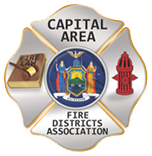By Dave Denniston NVFC OSHA 1910.156 Taskforce Chair
The NVFC continues to meet with the IAFC and IAFF as we wait for next steps from the Department of Labor and OSHA. There have been significant changes in leadership at these organizations. We are under the belief that they continue to digest the large volume of information and feedback offered during the process and are modifying the proposed standard into something that is much more agreeable. The proposed standard as written does not work for anyone, volunteer, combination, or career departments. All three organizations agree significant changes are needed from the proposal. We anticipate that they will craft a new standard that is technically and economically feasible using what is referred to as logical outgrowth from the process. The representatives from the IAFC, NVFC, and IAFF all agree that the best of all worlds would be to remove the NFPA standards by reference, bring a lot of the regulations back to the control of the home state and authority having jurisdiction, and make logical requirements that will help protect our first responders. We continue to monitor progress and are ready to pursue the next steps if the process does not yield a document that we can all live with. We have also voiced our opposition to a pure exemption of volunteer firefighters as we feel that the move would be counterproductive and further divide the two major factions of our emergency services. We have long fought for parity in items such as presumptive heart, cancer coverage, workers compensation benefits, equal representation, and firefighter safety. To simply exempt the volunteer fire service would be a huge disservice to these initiatives and leave combination departments in an extremely awkward, if not unmanageable situation. It would also be extremely difficult for municipalities to manage with two different sets of rules.
The three organizations are also hard at work building resources to support emergency services organizations moving forward. These resources include training, sample emergency action plans, risk management plans, community assessment forms, sample policies, and advocacy materials. The right tools will aid everything from a small rural volunteer department with a $50K budget all the way up to the large municipal all-career city department, and everything in-between. We are very excited by the working relationship being built by these national organizations and all involved in the process feel we are seeing ground-breaking results. If you have any questions or concerns about the process, we encourage you to reach out and get involved in the discussions. I can be reached at 607-423-1636 or ddenniston@afdsny.org. By working together, we can help build a fire service that will serve us well for years to come.
